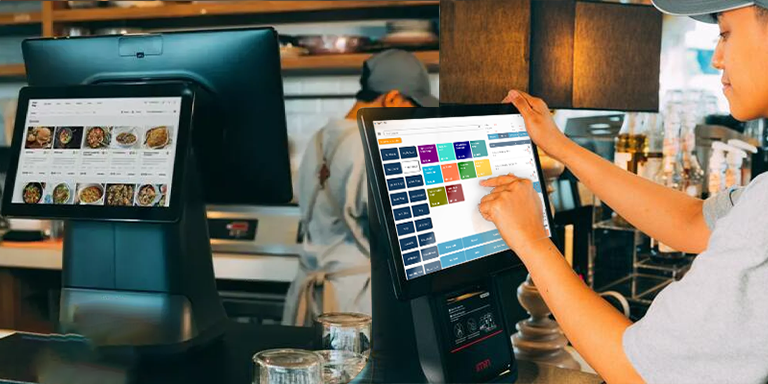Using POS Software to Optimize Inventory and Prevent Stockouts

Managing inventory effectively is one of the most critical challenges businesses face. Too much inventory can lead to wasted resources and storage costs, while too little can result in missed sales opportunities and dissatisfied customers. Striking the right balance is key to operational success, and this is where Point-of-Sale (POS) software comes in. With its advanced features, POS software not only simplifies inventory management but also helps businesses prevent stockouts and optimize their stock levels.
The Importance of Inventory Optimization
Inventory optimization ensures businesses maintain just the right amount of stock to meet customer demand without overstocking or understocking. Achieving this balance has several benefits:
- Improved Cash Flow: Tying up less capital in inventory allows businesses to allocate resources to other areas.
- Enhanced Customer Satisfaction: Having the right products available when customers need them boosts loyalty and trust.
- Reduced Waste: Especially for perishable goods, optimal inventory levels minimize the risk of spoilage.
How POS Software Supports Inventory Optimization
Modern POS systems are equipped with features designed to make inventory management seamless and accurate. Here are some of the ways POS software helps businesses:
1. Real-Time Inventory Tracking
POS systems automatically update inventory levels with every sale or return. This real-time tracking ensures businesses always know how much stock they have on hand. For instance, a clothing retailer can instantly see if a popular item is running low and take action to replenish it before it sells out.
2. Sales Analytics and Demand Forecasting
By analyzing sales data, POS software can identify trends and patterns. It can highlight which products sell quickly, which are seasonal, and which are underperforming. Using this information, businesses can forecast demand more accurately, ensuring they stock up on high-demand items while avoiding over-purchasing slow movers.
3. Low Stock Alerts
POS systems can be configured to send alerts when stock levels fall below a predefined threshold. These alerts give businesses enough time to reorder products and prevent stockouts. For example, a coffee shop might set an alert to reorder coffee beans when inventory drops below a week’s supply.
4. Vendor Management
Many POS systems integrate vendor management features, making it easy to reorder stock directly from suppliers. This streamlines the restocking process and reduces the risk of delays.
5. Inventory Valuation and Reporting
Detailed inventory reports provided by POS software allow businesses to assess the value of their stock and identify areas for improvement. For instance, a business might notice that certain products consistently remain unsold and decide to adjust purchasing strategies or run promotions to clear excess stock.
Preventing Stockouts with POS Software
Stockouts can have a significant negative impact on businesses, including lost sales, reduced customer satisfaction, and potential damage to brand reputation. Here’s how POS software helps prevent this:
1. Enhanced Visibility
POS systems provide comprehensive visibility into stock levels across all locations. This is especially useful for businesses with multiple stores, ensuring that no location runs out of critical items.
2. Automated Reordering
With automated reordering features, POS software can place purchase orders with suppliers as soon as stock falls below a set level. This reduces the risk of human error and ensures a steady supply of goods.
3. Integration with E-Commerce Platforms
For businesses with both physical and online stores, POS software ensures inventory data is synced across all channels. This prevents overselling online and ensures that in-store stock remains available for walk-in customers.
4. Monitoring Seasonal Demand
POS systems analyze historical data to predict seasonal spikes in demand. For instance, a retailer might use POS insights to stock up on holiday decorations well in advance of the festive season, ensuring they meet customer demand without running out.
5. Reducing Lead Times
By analyzing supplier performance, POS systems can help businesses choose reliable vendors with shorter lead times. This reduces the risk of delays in restocking critical items.
The Future of Inventory Management with POS Software
As technology evolves, POS systems are becoming even more sophisticated. Features like artificial intelligence (AI) and machine learning are enabling predictive analytics, helping businesses forecast demand with even greater accuracy. Integration with Internet of Things (IoT) devices, such as smart shelves, provides real-time inventory updates, further enhancing inventory management capabilities.
Cloud-based POS systems are also making inventory data more accessible. Managers can monitor stock levels, analyze sales trends, and place orders from anywhere, ensuring quick decision-making and better control over inventory.
Conclusion
Using POS software to optimize inventory and prevent stockouts is a game-changer for businesses. By providing real-time data, actionable insights, and automated tools, POS systems help businesses maintain the right stock levels, improve efficiency, and enhance customer satisfaction. In an era where every sale counts, investing in a smart POS system is not just an option but a necessity for businesses looking to stay competitive and grow sustainably.






